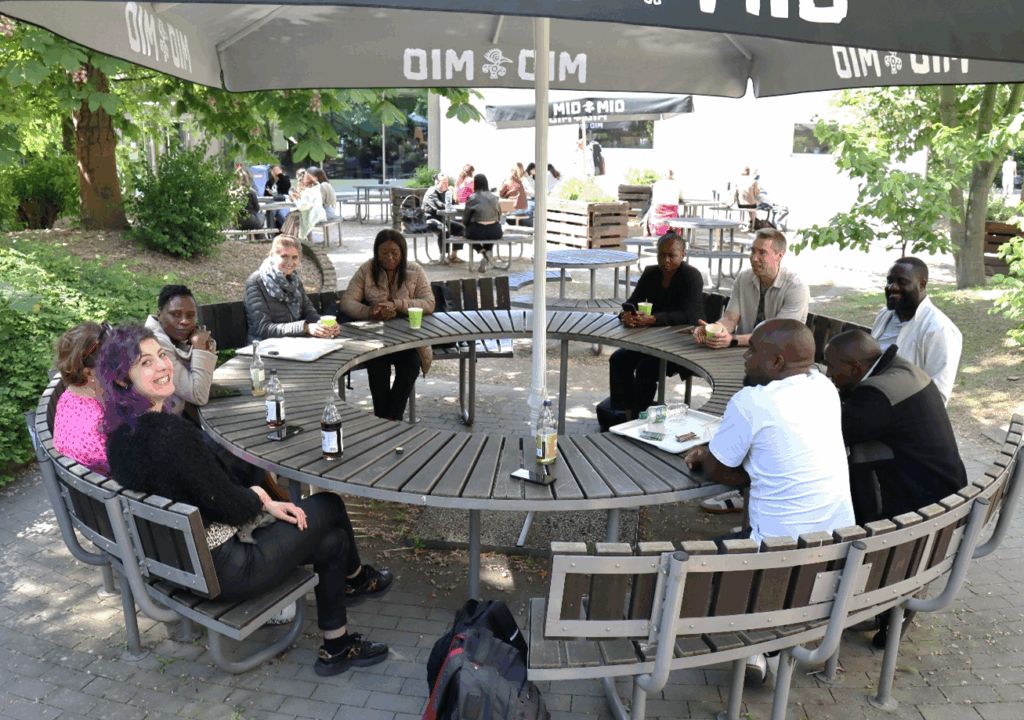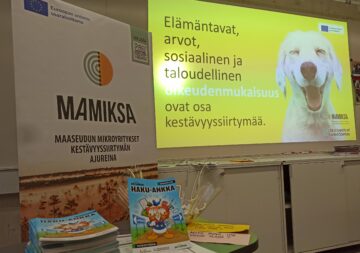
The scarcest resource in today’s working life is time. With pressing deadlines and full schedules, too many times the project teams rush into decisions and actions without ensuring the common understanding. Especially in a multicultural context it pays off to pause for a moment, pay attention to each other and use the dialogue to think together.
Author: Ville Lehto
The work package 5 of the “Developing Sustainable and Entrepreneurial Villages through Educational Living Labs in Namibia and Zambia – SmartVille” project is aiming to develop learning methods and curricula in four African partner universities (Smartville Living Labs 2024). While heading for the face-to-face intensive week hosted and organized by the TU Dortmund, the members were discussing suitable topics for the time slot reserved for us. The work package team wished that the time would be used for the clarification of the roles and responsibilities. The need appeared to be universal in the project and led to an extremely fruitful dialogue between all the project members.
Good dialogue is based on a meaningful content and clear rules
The dialogue was launched with a short description of the project management basic principles and basic rules of dialogue. For project management the spark for the dialogue was provoked stating that project management is simple, but leadership is hard. Management is simple, because every project has a beginning and an end. In between you have actions determined by the objectives. It is just about assigning clear roles to the people and delegating the tasks. Then you just have to keep the objectives, roles and expected actions clear for everyone, monitor the timeline and make corrective actions if needed. On the contrary, leadership is hard, because of the people. Not because the people are difficult, but because they are different. They have different personalities, skills and capabilities, different resources and different motivations. More than glorious success leadership is about somehow making it together. You might succeed if you take time to know the differences, you are able to accept them (which might sometimes be the hardest part for the manager) and find a way to deal with them.
For the dialogue the first rule was to put away all the screens. Dialogue is about thinking together, and then we must be there for each other and pay attention. If we have screens, they steal our attention although you should concentrate on the person who is speaking and what kind of thoughts and feelings the message sparks in you. The basic building blocks of dialogue – respect, speaking from the heart, listening and waiting – were introduced along with the languages of action, feelings and meanings. Following these principles created an intense and fruitful moment of honest, respectful and meaningful conversation. Many of the team members praised afterwards the decision to get rid of the screens, although they said that first they had felt it was a harsh requirement.
Most inspiring insights are built together
The first brave thought of an issue where we had some room for improvement was to realize that even the first point “project has a beginning” is not the same for everyone. The idea was voiced out by a person who had joined in as a result of some personnel change and only now met the members working in other work packages the first time. His feelings were shared with others who had not been in the project from the start. While we had done quite good job with the management part, the leadership elements had been forgotten in the rush.
Another theme which popped up in various dimensions was the need to make things visible to others. Some members had had problems with some administrative processes and others were questioning the reason for hiding the problem. It was enlightening to hear the explanation, that for many this is the first EU funded project, and they didn’t even know that the way things were going was not normal. The word respect and especially the lack of respect started to appear repeatedly in many comments, which were not necessarily directly linked to each other. We realized that, again, we were dealing with making things visible. While we all see 100% of the work we do, we never see 100% of the work others do.
We were also able to build a lot of common understanding about the importance of the project outcomes and indicators compared to the meaningful impact of our actions. While admitting that both of them are important, we realized that sometimes there are situations where we face a tradeoff. For those who emphasized the meaningful impact the others seemed to lack real motivation and ambition and just wanting to get the bureaucracies done, while from the other point of view the others seemed to be sloppy and not committed to delivering the promised results. After opening our thoughts, we realized that we are all very highly motivated and ambitious to make the impact, raise the level of education for the students and improve the wellbeing and the lives of the people in the African rural communities. We just can’t forget about the indicators and outcomes as they are the prerequisite for the continued funding. If we want to keep getting the resources for making the impact in the long term, it might be that we sometimes just have to concentrate on delivering the required outcomes in the short term.
Investing in the common understanding pays off in the long term
These examples, and there were many more, show how a lack of understanding leads to negative speculation and assumptions which are not true, and from there to disrespectful words and sometimes hasty decisions and suboptimal actions. But when we take some time for a dialogue, making things visible and building common understanding, we are not only removing the negatives. In the long term also the efficiency and effectiveness grow and bypass the results of the more straight to the business style. Most importantly, with understanding comes genuine respect, positive feedback and the extremely grateful feeling of the privilege of being part of such an ambitious and professional team.
Sources
Smartville Living Labs. 2024. Website. Cited 27 May 2025. Available at https://www.smartvillelivinglabs.com
Author
Ville Lehto works as team coach and senior lecturer of marketing and international business at LAB University of Applied Sciences. In Smartville living labs project he runs the work package aiming to develop learning methods and curricula.
Illustration: Using dialogue helps building trust, common understanding and team spirit. (Photo: Kerstin Guhlemann)
Reference to this article
Lehto, V. 2025. Using dialogue to build common understanding in a multicultural project team. LAB Pro. Cited and date of citation. Available at https://www.labopen.fi/en/lab-pro/using-dialogue-to-build-common-understanding-in-a-multicultural-project-team/







